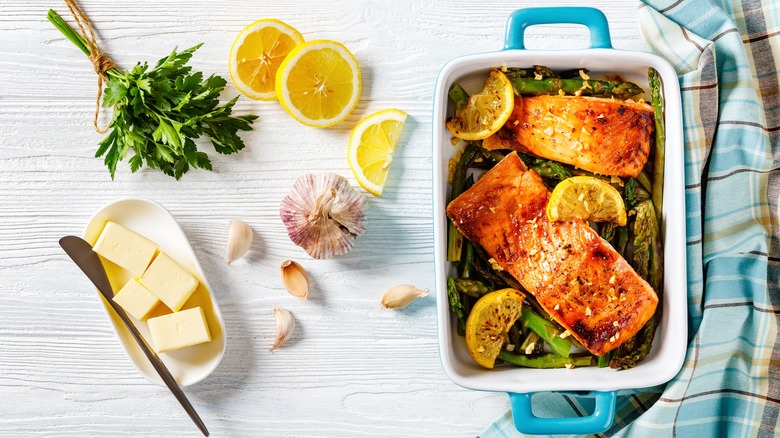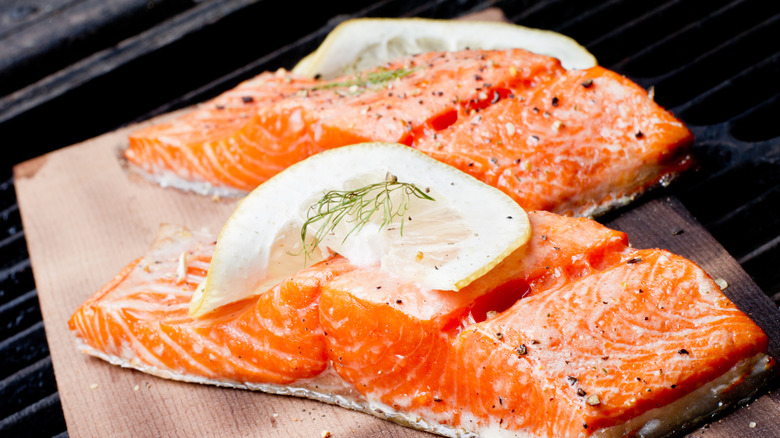Butter Is The Key Ingredient To Give Sockeye Salmon Velvety Flavor
Salmon is a fish with a rich, bold flavor that can be prepared in a variety of ways. Perhaps one of the most flavorful varieties of this fish is sockeye salmon. Sockeye is a type of salmon that's found in the northern Pacific. It differs from its cousin on the other coast, Atlantic salmon, in some key ways. One of those is that sockeye is more often wild caught and it's leaner than Atlantic salmon, with a deeper color and richer flavor. Because sockeye is less fatty than some other fish, like Atlantic salmon, you'll want some extra fat in the pan when you go to cook it – and the best source for your salmon dish is butter.
While neutral oils like vegetable oil are good for high-heat searing, and olive oil may be tempting to use for its health benefits, butter is ideal for cooking and basting sockeye salmon for optimal flavor and a heavenly texture. The butter will seep into the pinkish-red flakes of fish and elevate its taste, and it's easy to incorporate whether you're pan-frying, baking, grilling, or even poaching your fish.
How to cook the best wild-caught sockeye salmon
Sockeye salmon is a gorgeous wild fish that deserves the utmost respect when cooking. In order to prepare a dish that'll highlight the best parts of sockeye, there are a few things to keep in mind.
First, cook the salmon with the skin on, whether or not you want to eat the skin. Not only is the skin easier to remove once the fillet is cooked, but it also helps the fish cook to perfection without burning. If you do want to eat the skin, try searing it skin-side down over medium-high heat to crisp it up, then lower the temp to allow the flesh to gently cook through. This turns the skin into a crispy, savory bite instead of a chewy, soggy part of the fish you'd rather set aside for the dog. And be sure not to overcook the fish, making it dry or tough. In addition, keep an eye on the color: When it goes from looking transparent to opaque, that's a good clue that it's done.
When it comes to adding extra flavors to your sockeye, remember that with a quality piece of fish, less is often more. Don't go overboard with heavy cream sauces or competing flavors in order to highlight the flavor of the fish itself. Along with a healthy dose of butter, try including simple aromatics like fresh herbs and citrus.

